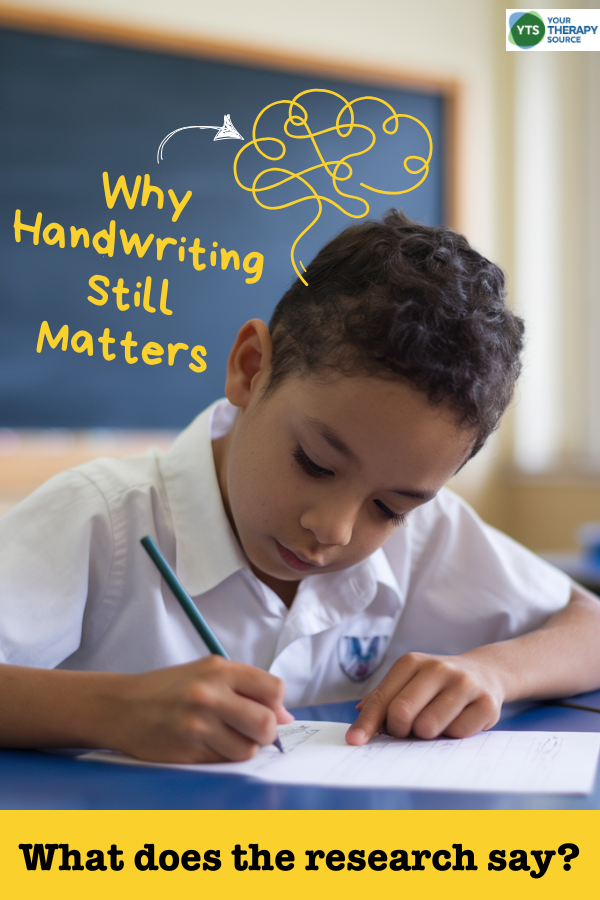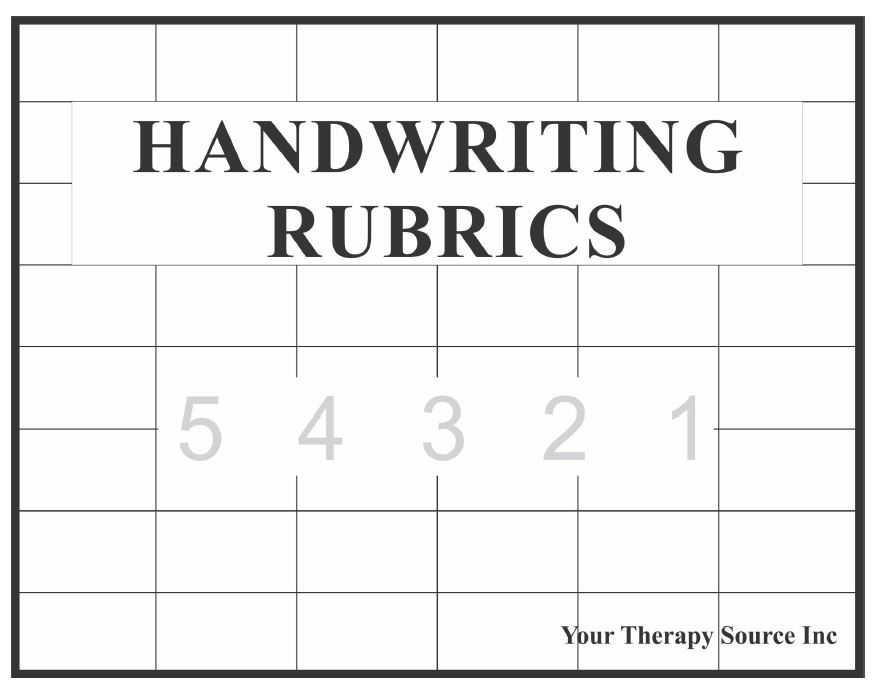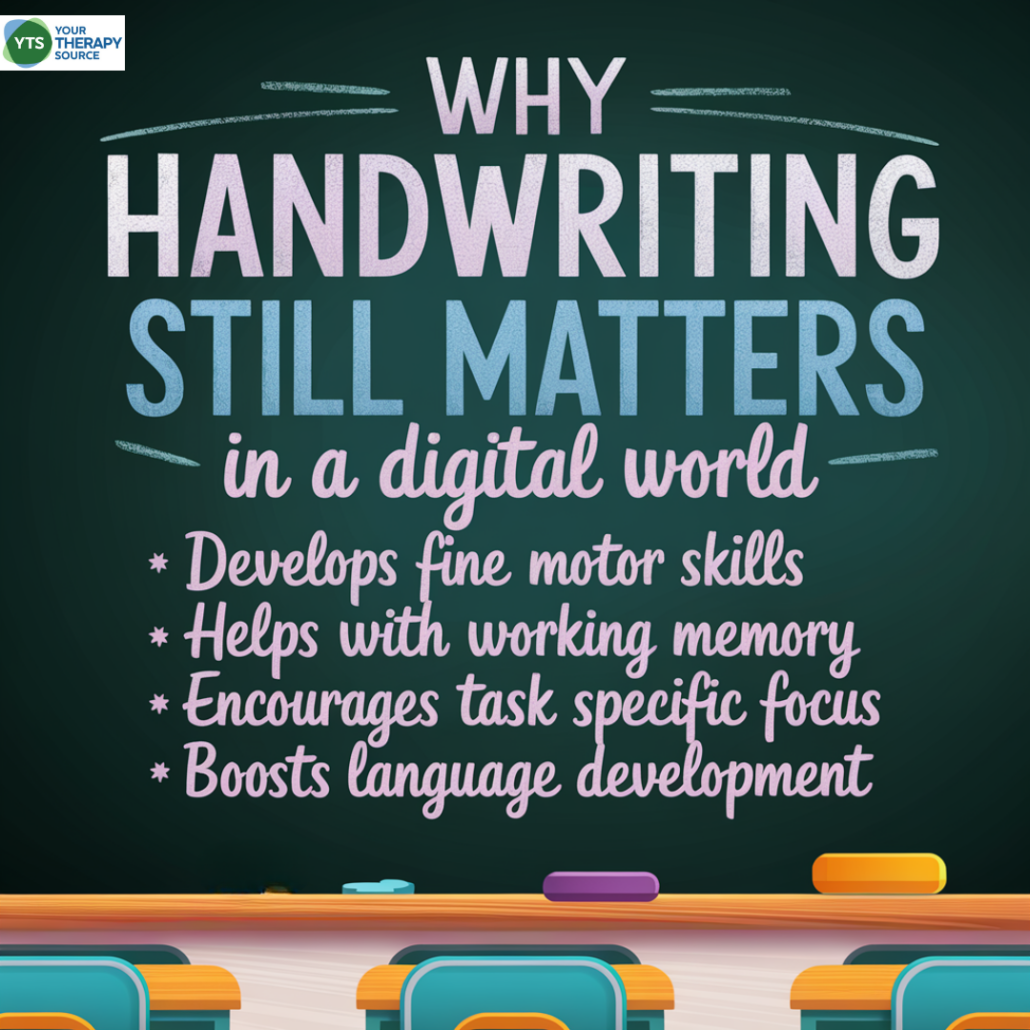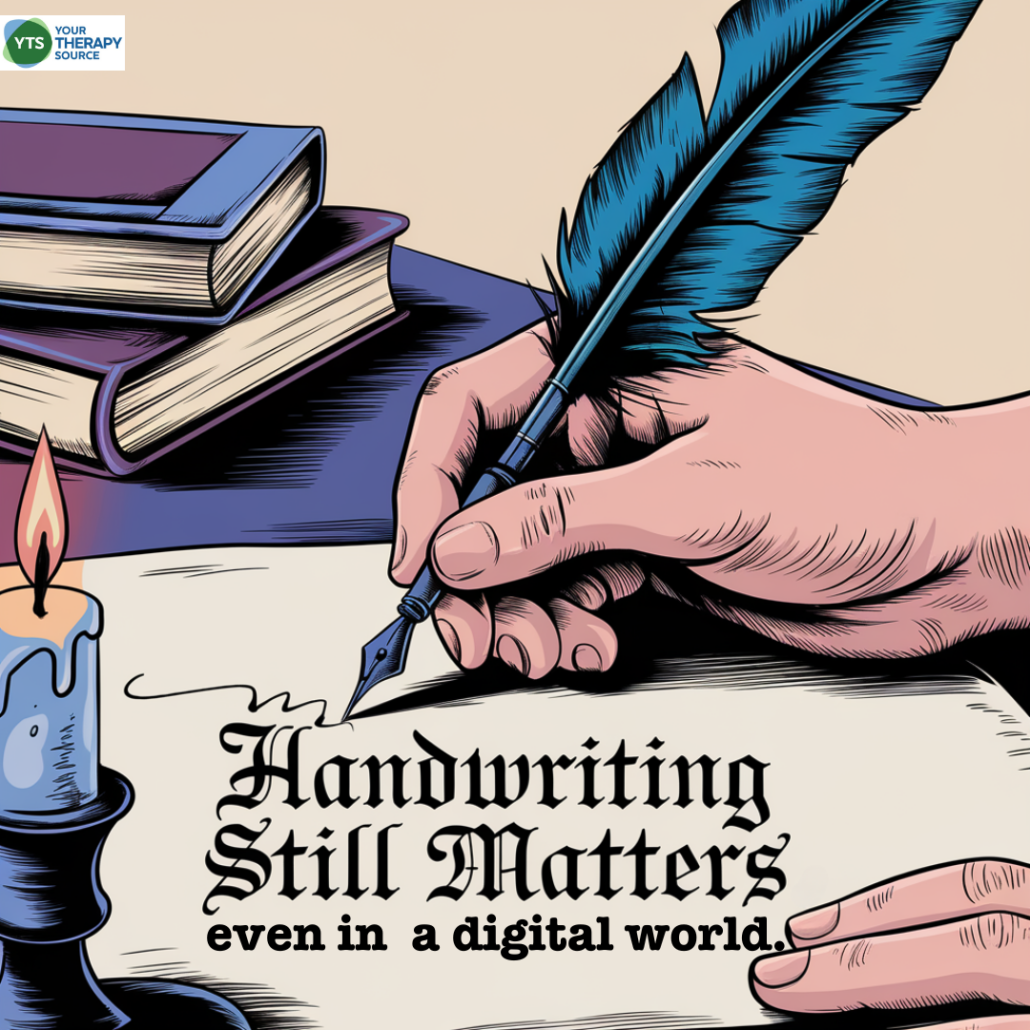Why Handwriting Still Matters in a Digital World
As classrooms increasingly shift toward digital tools, one to one computers, and voice to text, the role of traditional handwriting has come into question. Typing on keyboards or touchscreens is faster and more efficient for many tasks, but emerging research shows that handwriting offers significant benefits for the brain. Understanding these benefits is essential for educators as they shape learning experiences for students. Handwriting still matters to our brain!

Handwriting Engages the Brain in Unique Ways
A recent study investigated how handwriting and typewriting affect the brain’s activity. Using EEG technology to monitor brainwaves, researchers discovered that handwriting stimulates more complex brain connectivity patterns compared to typing (Van der Weel & Van der Meer, 2024).
When students write by hand, the brain displays greater activity in two key frequency ranges: theta (3.5–7.5 Hz) and alpha (8–12.5 Hz). These brain rhythms are critical for:
- Memory Formation: Theta waves support working memory and the ability to learn new information.
- Attention and Learning: Alpha waves are associated with long-term memory and task-specific focus.
In contrast, typing—which involves simple and repetitive finger movements—did not produce the same brain connectivity patterns. The act of forming letters by hand requires coordination of vision, motor control, and proprioception (awareness of body movement), leading to a richer learning experience.

Handwriting Rubrics
Why Brain Connectivity Matters for Learning
Handwriting doesn’t just activate individual brain regions—it strengthens connections between them. When these regions “communicate” more effectively, the brain is better equipped to encode and retain new information. The study found significant connectivity between central and parietal brain regions when participants wrote by hand. These areas are linked to:
- Attention Control: Handwriting encourages students to focus on the task at hand, improving their ability to concentrate and control attention.
- Visual Processing: Writing letters by hand helps children develop better visual-motor integration, which supports overall visual processing skills.
- Language and Memory Integration: The act of forming letters boosts language development and enhances memory retention by engaging multiple cognitive processes.

Explicit Handwriting Instruction and Why It Matters
Explicit handwriting instruction involves teaching students how to form letters and write fluently through structured practice and guidance. This method has been shown to improve not only handwriting skills but also broader academic outcomes. By integrating explicit handwriting instruction into the classroom, educators can ensure students develop the foundational skills necessary for academic success. Activities such as tracing, guided writing, and repeated practice can make this process engaging and effective. Here’s why it matters:
- Builds Strong Foundations: Teaching proper letter formation helps students develop consistent and legible handwriting, reducing frustration and improving confidence.
- Supports Literacy Development: Explicit handwriting instruction has been linked to better spelling, reading, and writing skills. By learning how to write letters correctly, students strengthen their letter recognition and phonics knowledge.
- Enhances Memory and Comprehension: Structured practice reinforces the brain’s ability to process and store information. Students who write by hand often show improved recall and understanding compared to those who type.
- Prepares for Higher-Level Writing Tasks: Once students master handwriting, they can focus on more complex writing activities like organizing ideas and crafting essays without being hindered by poor writing mechanics.

What Does This Mean for the Classroom?
While typing has its place in today’s classrooms, handwriting remains a powerful tool for learning. Here are some key takeaways for educators:
- Handwriting Improves Memory and Retention
Handwriting notes during lessons can help students better understand and remember information. The brain’s engagement during handwriting makes it easier to store new knowledge in long-term memory. - Fine Motor Skills Are Essential
Handwriting helps develop fine motor control, which is important for young learners. The precise hand movements involved in shaping letters strengthen the connections between brain and body. - Balancing Technology and Tradition
While students need keyboarding skills for efficiency, educators should continue to include handwriting practice in their curriculum. For tasks like taking notes, brainstorming, or learning new concepts, handwriting may be more effective.

Dysgraphia Handwriting Intervention – Occupational Therapy Tools A: Formations
Tips for Incorporating Handwriting in the Classroom
- Encourage Daily Practice: Include short handwriting exercises each day, such as journaling or writing vocabulary words.
- Mix Writing Methods: Have students take handwritten notes during lectures and compare their retention with typing.
- Make It Engaging: Use creative activities like letter tracing, writing stories, or drawing mind maps to make handwriting fun.
Additional Resources on Handwriting
For further reading and strategies, check out these articles from Your Therapy Source:
- The Importance of Handwriting for Writing Skills
- Effective Handwriting Interventions
- Curriculum-Based Handwriting Programs
- Handwriting and Pencil Grasp
- Handwriting Challenges in Children with DCD
- Free Handwriting Worksheets
The Bottom Line
Handwriting is more than just a skill—it’s a brain-boosting activity that enhances learning, memory, and focus. While technology plays a valuable role in education, educators should ensure handwriting remains part of the classroom experience. By striking a balance between digital tools and traditional methods, we can support students in building stronger brains and deeper learning skills.
Reference
Van der Weel, F. R., & Van der Meer, A. L. (2024). Handwriting but not typewriting leads to widespread brain connectivity: a high-density EEG study with implications for the classroom. Frontiers in Psychology, 14, 1219945.


